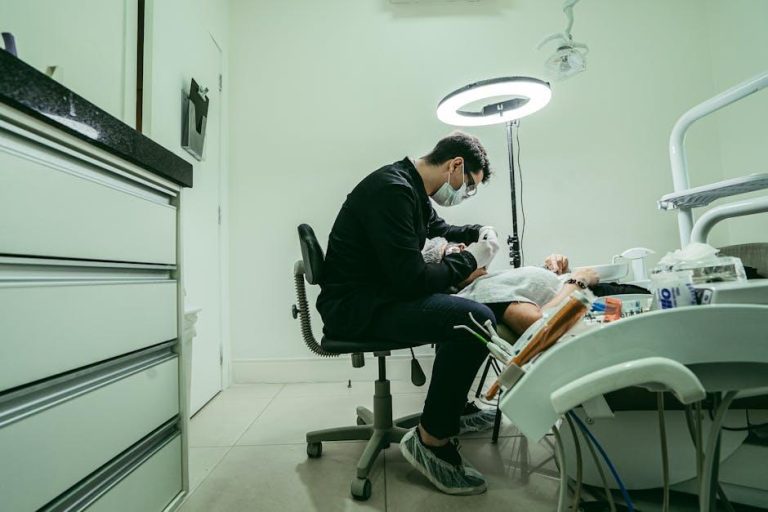
What Qualifies As A Dental Emergency? – Texas A&M
When dental problems strike suddenly, recognizing what qualifies as a dental emergency is essential. Whether you’re a Texas A&M student, staff, or a local resident, knowing when to seek immediate dental care can save your teeth, alleviate pain, and prevent complications. This comprehensive guide explores common dental emergencies, their symptoms, and practical tips to handle urgent dental situations.
Understanding Dental Emergencies
A dental emergency generally refers to any oral health issue that requires immediate attention to save a tooth, stop ongoing pain, or prevent serious infection. Not every dental problem needs emergency care — some can wait for regular appointments. But situations causing severe pain, active bleeding, swelling, or trauma to teeth and gums often call for urgent dental intervention.
Common Causes of Dental Emergencies
- Trauma: Sports injuries, accidents, or falls leading to broken, fractured, or knocked-out teeth.
- Severe Toothache: Persistent, intense pain often caused by infection, deep cavities, or abscesses.
- Dental Abscess: Infection around the tooth root or gums causing swelling, fever, and pain.
- Lost Fillings or Crowns: These can expose sensitive areas of the tooth and cause pain or damage.
- Soft Tissue Injuries: Cuts or lacerations to the tongue, lips, cheeks, or gums.
- Excessive Bleeding: Bleeding from oral injuries that doesn’t stop with gentle pressure.
What Qualifies As A Dental Emergency at Texas A&M?
Texas A&M’s dental clinics follow generally accepted emergency guidelines to prioritize urgent care cases. The following conditions qualify as dental emergencies and should prompt you to seek immediate professional help:
| Dental Emergency Type | Description | Typical Symptoms |
|---|---|---|
| Knocked-Out Tooth (Avulsed Tooth) | Tooth completely dislodged from the socket due to trauma. | Missing tooth, bleeding, pain, swelling. |
| Severe Toothache | Persistent, intense pain affecting daily activities. | Throbbing, sharp or constant pain, sensitivity to hot/cold. |
| Dental Abscess | Infection around tooth root or gum. | Swelling, fever, pus discharge, intense pain. |
| Broken or Fractured Tooth | Tooth cracked, chipped, or broken after injury. | Sharp edges, pain when chewing, sensitivity. |
| Lost Filling or Crown (With Pain) | Restorations dislodged, exposing sensitive dentin or nerve. | Sharp pain, sensitivity, discomfort when eating. |
| Oral Soft Tissue Injury | Severe bleeding or deep cuts on tongue, lips, gums. | Bleeding that doesn’t stop, swelling, pain. |
| Excessive Bleeding | Continuous bleeding post-dental treatment or injury. | Blood loss, bleeding > 15 minutes despite pressure. |
Why Immediate Care Matters
Ignoring or delaying treatment for dental emergencies can lead to serious complications—including tooth loss, spread of infection, and chronic pain. At Texas A&M, timely intervention ensures the best possible outcomes for your oral health and overall well-being.
- Preserves natural teeth: Quick care increases the chances of saving your original teeth.
- Reduces infection risk: Early treatment prevents infections from worsening or spreading.
- Alleviates pain quickly: Emergencies cause significant discomfort; prompt care provides fast relief.
- Avoids costly treatment: Addressing issues early often minimizes need for complex procedures.
First-Aid Tips for Dental Emergencies
Before reaching Texas A&M’s emergency dental services, knowing how to manage the situation can help reduce damage and pain:
Knocked-Out Tooth
- Pick up the tooth by the crown (top surface), avoid touching the root.
- If dirty, gently rinse the tooth with water — do not scrub or use soap.
- Try to reinsert the tooth into the socket if possible and hold it in place.
- If reinsertion isn’t possible, store the tooth in milk or saliva (inside your cheek) to keep it moist.
- Seek emergency dental care immediately – within 30 minutes is ideal.
Severe Toothache or Abscess
- Rinse your mouth with warm salt water to reduce bacteria and relieve pain.
- Take over-the-counter pain relievers as recommended (avoid aspirin near tooth as it may worsen bleeding).
- Apply a cold compress to the cheek to lessen swelling.
- Avoid hot, cold, or sugary foods that can aggravate pain.
- Contact Texas A&M dental emergency services promptly.
Broken or Fractured Tooth
- Save any broken pieces of the tooth and bring them to your dentist.
- Use cold compresses to reduce swelling and take pain medication if needed.
- Avoid chewing on the damaged side.
Soft Tissue Injury
- Rinse mouth gently with warm salt water to clean the wound.
- Apply pressure with sterile gauze to stop bleeding.
- If bleeding persists beyond 15-20 minutes, seek urgent dental care.
How Texas A&M Supports Students & Community During Dental Emergencies
Texas A&M University offers dedicated urgent dental care services to provide fast and effective treatment for students, faculty, and the surrounding community. Some key features include:
- On-campus emergency dental appointments with licensed dentists
- Access to pain management and infection control
- Guidance on handling and preventing future dental emergencies
- Coordinated referrals for specialized oral surgery or restorative care when needed
Case Study: Prompt Care Saves a Knocked-Out Tooth
Jane, a Texas A&M student and volleyball player, sustained an accidental blow during practice that knocked out one of her front teeth. She immediately followed first-aid steps by retrieving the tooth, keeping it moist in milk, and visiting the campus dental clinic within 20 minutes. Thanks to the swift care provided, the tooth was successfully replanted and stabilized—allowing Jane to preserve her natural smile without requiring implants or bridges.
Practical Tips to Prevent Dental Emergencies
- Wear mouthguards: Essential during sports or activities with risk of oral injury.
- Maintain good oral hygiene: Regular brushing and flossing reduce the chances of decay and infection.
- Visit Texas A&M dental clinic for routine checkups: Early detection can prevent many emergencies.
- Avoid chewing on hard objects: Such as pens, ice, or hard candy that can fracture teeth.
- Avoid delaying care: Seek advice even for minor dental concerns before they escalate.
Conclusion
Knowing what qualifies as a dental emergency is vital for protecting your oral health and minimizing pain or long-term damage. At Texas A&M, immediate dental care is available to address urgent issues like knocked-out teeth, severe toothaches, dental abscesses, and more. By understanding the symptoms, acting quickly, and utilizing campus dental resources, you can safeguard your smile and overall health. Remember, prompt attention makes all the difference — don’t hesitate to pursue emergency dental care when needed!


